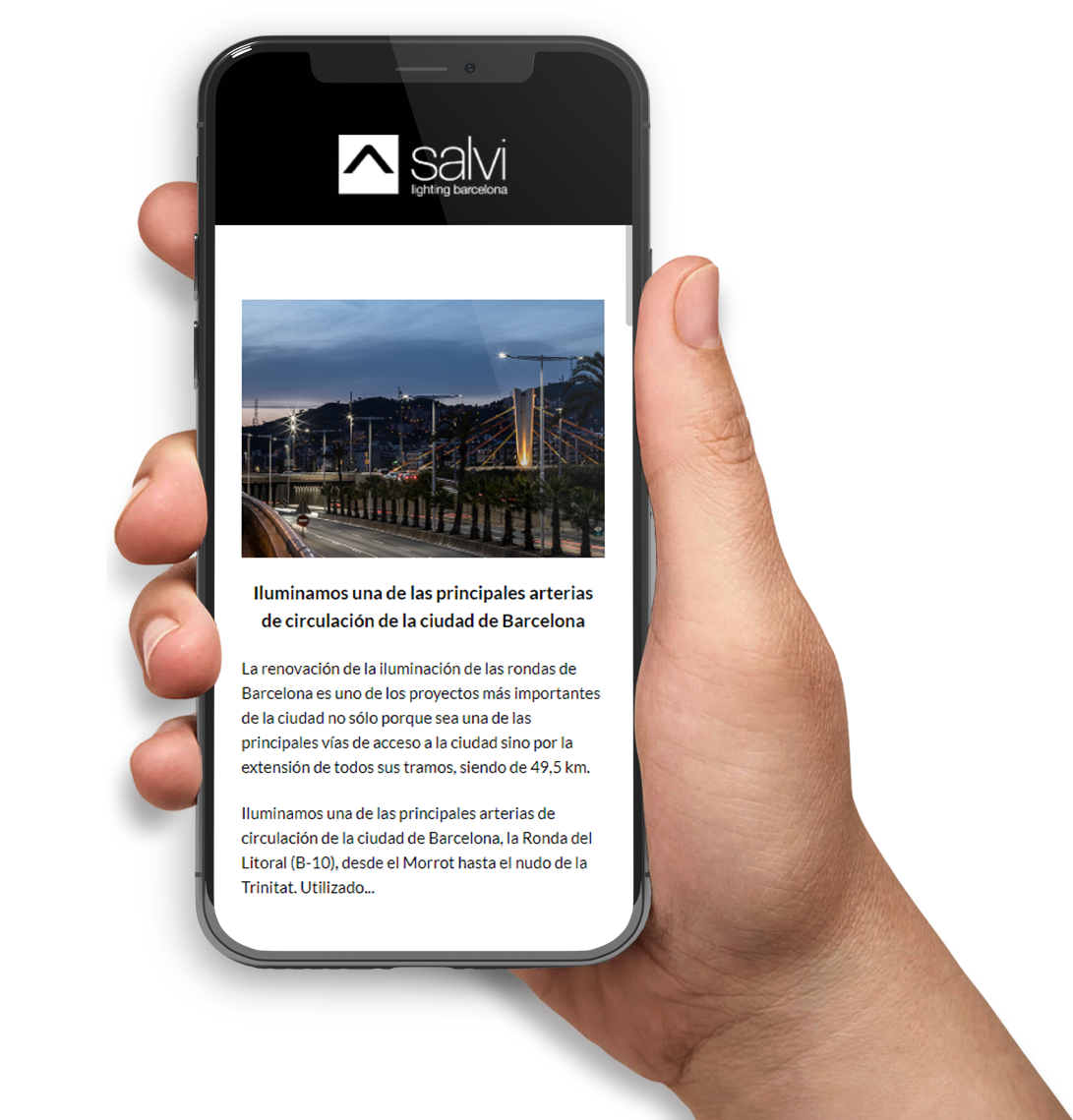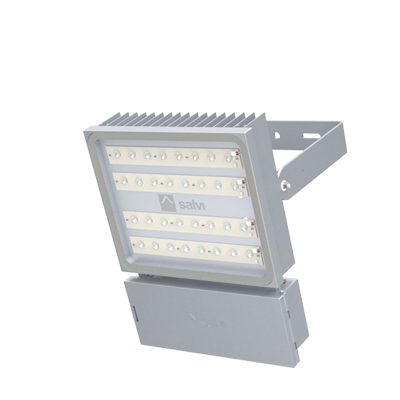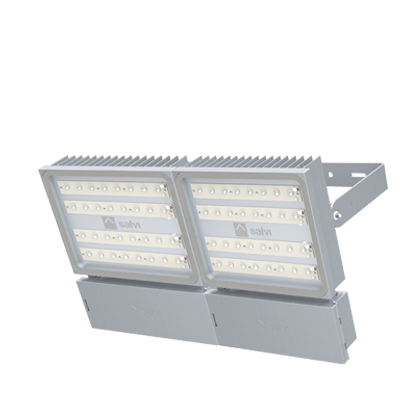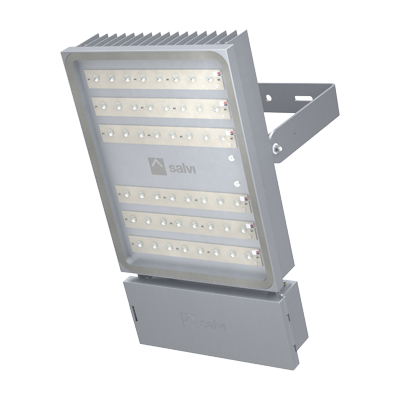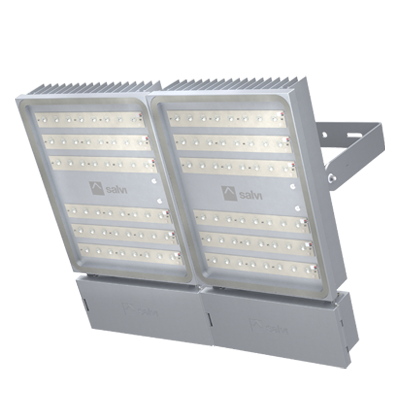The development of a tunnel lighting project presents unique challenges that require meticulous planning and precise execution. The lack of daylight penetration into the tunnel requires compensating with high efficiency lighting to avoid the dangerous "black hole" effect and gradually adapting the driver from high outdoor lighting to dimmer lighting in the most central part of the tunnel.
This type of project involves a series of key considerations and steps to ensure the safety, efficiency and durability of the installation. In this guide, we highlight the most important aspects to consider to ensure a successful installation, based on our experience at Salvi Lighting Barcelona.
The first thing to keep in mind when starting a tunnel lighting project is that the tunnel must be illuminated in two different scenarios: day and night. This is the most important aspect to take into account in the first place since the drivers' vision when entering the tunnel will be very different during the day and at night and depending on whether the environment is an open road or not.
During the day, in open environments, the driver enters the tunnel with his vision accustomed to very high natural illumination and entering the tunnel may cause blindness if the tunnel is not well illuminated.
For this reason, tunnels are divided into zones to help plan the lighting project:

Access zone:
-Exterior lighting: in this zone, a smooth transition from natural light from the exterior to the interior of the tunnel should be ensured. Lighting should be gradual to avoid a "black hole" effect.
Threshold zone:
-Adaptation lighting: this zone is critical as the human eye needs time to adapt to the brightness inside the tunnel. The light must be intense and well distributed to ensure clear and safe visibility.
Transition zone:
-Gradual illumination: the illumination in this zone should gradually decrease to help drivers' eyes adapt to the lower light levels inside the tunnel.
Central zone:
-Constant and uniform illumination: light intensity may be lower than in the previous zones, but should be sufficient to ensure clear visibility along the entire length of the tunnel.
Exit zone:
-Adaptive lighting for exit: as vehicles approach the tunnel exit, lighting should be gradually increased to prepare drivers for outside light.
Regulations and safety standards for tunnel lighting.
There is a wide range of international standards on all aspects that define the field of lighting. In relation to tunnel lighting, these standards define, among other parameters, the minimum levels of illumination necessary to ensure visibility and safety for drivers.
It is crucial to comply with international and local regulations and standards related to tunnel lighting both to ensure the safety of the population and the success of the project and to generate savings on initial investment and long-term maintenance costs.
The UNE-EN 13201 standard, for example, establishes the requirements for tunnel and road lighting.
Key players in a tunnel lighting project.
In any tunnel lighting project, three main players are involved: the owner, the engineer and the installer or maintainer. Each has specific objectives that must be considered to achieve an efficient and functional installation.
- Ownership: seeks to minimize investment and operating costs, and expects the facility to operate smoothly over the long term.
- Engineering: must comply with regulations, ensure visual comfort and keep the project within budget.
- Installer/Maintainer: needs to reduce installation time, minimize problems during the job site and ensure post-installation peace of mind.
- Manufacturer: it must listen and take into account the needs of all stakeholders, as well as the particularities of the location in order to offer the most appropriate solution.
Objectives translated into specifications
The objectives of each stakeholder can be translated into a number of key technical concepts:
- Durability and robustness: ensure that luminaires and systems are strong and durable.
- Luminaire efficiency (lm/W): maximize energy efficiency.
- Photometry and uniformity: ensure uniform and adequate lighting for road safety.
- Controlled glare: minimize glare for driver comfort.
- After-sales support and service: provide excellent service and technical support.
Choosing the right luminaires
In the context of tunnel lighting, the durability and robustness of the luminaires are essential.
Components and configurations make a difference. Luminaires and systems must withstand adverse conditions, including constant vibrations caused by traffic, high humidity and possible contaminants present in the tunnel environment. This not only ensures long equipment life, reducing the frequency of maintenance and replacement, but also contributes to road safety by ensuring constant and reliable illumination. Using corrosion-resistant materials and designs that protect against mechanical impacts are practices that increase the durability and robustness of the installations.
Selecting the right product is crucial. At Salvi Lighting, we offer projectors with advanced features:
- Efficiency (from 182.2 lm/W).
- Glare control and easy access for maintenance.
- Flexibility in sizes and configurations for different scenarios.
- Hermeticity: resistance to dust and protection against microparticles, splashes and violent shocks.
- Anticorrosion.
- Heat dissipation: heat dissipation ensuring good performance in extreme conditions.
- Fire resistance: non-flammable materials.
Luminaire efficiency (lm/W)
Maximizing energy efficiency in tunnel lighting is crucial from both an economic and environmental perspective. Luminaire efficiency, measured in lumens per watt (lm/W), indicates how much light is produced for each unit of energy consumed. High efficiency reduces energy consumption and thus operating costs. In addition, by reducing energy demand, it contributes to the reduction of the project's carbon footprint. In large-scale projects such as tunnels, even small improvements in energy efficiency can translate into significant financial and environmental savings.
Adaptability and photometry
Adaptability and photometric accuracy are essential in tunnel lighting projects due to the diversity of configurations and specific requirements of each type of tunnel.
Types of tunnels
- Unidirectional and bidirectional: the direction of traffic affects the placement and type of luminaires required. In unidirectional tunnels, lighting should focus on the direction of traffic, while in bidirectional tunnels, it should consider traffic in both directions.
- Varying mounting heights: depending on the height of the tunnel, luminaires must be adjusted to provide adequate illumination without causing glare. Mounting height influences light dispersion and the number of luminaires required to maintain uniformity.
- Luminaire locations: luminaires can be arranged in different configurations, such as unilateral, bilateral, zenithal or backlit. Each configuration requires a specific photometric approach to ensure uniform light distribution and avoid shadows or poorly lit areas.
Development of specific lenses
- Lenses optimized for various scenarios: to maximize efficiency in each scenario, specific lenses are developed that adapt light emission to the needs of the tunnel. These lenses allow light to be directed exactly where it is needed, improving visibility and reducing energy consumption.
- Maximizing luminous efficiency: custom-designed lenses ensure that light is evenly distributed, optimizing the distance between luminaires and minimizing glare. This not only improves road safety, but also contributes to the sustainability of the project by reducing the number of luminaires required and thus energy consumption.
Photometry
- Uniform light distribution: proper photometry ensures that light is evenly distributed throughout the tunnel, eliminating dark areas and providing constant visibility for drivers. This is crucial for safety, especially in long tunnels or tunnels with sharp curves.
- Glare reduction: precise photometric design minimizes glare, which can be dangerous for drivers. Luminaires should be equipped with glare control technology to ensure a comfortable and safe visual environment.
Selection and optimization process
When choosing the right photometry for tunnel lighting, it is important to use specific software such as ReluxTunnel to consider internal reflections and to follow the CIE88 fitting curve profile.
This ensures a smooth transition in lighting levels within the tunnel, guaranteeing visual comfort and safety.
Direct substitution vs. optimization
Two possible approaches are direct replacement of existing luminaires or complete optimization:
- Direct replacement: Lower initial investment and shorter installation times, but may not maximize energy savings.
- Full optimization: Higher initial investment, but with significant reductions in installed power and energy consumption in the long term.
Case study: northern Spain tunnel lighting project
In a real case of a tunnel lighting project, we evaluated both options for a tunnel 10 meters wide and luminaires at 4.65 meters high. The optimized version resulted in a 20% saving in installed power and 19.2% in energy savings, without sacrificing user comfort.
Smart Lighting management technologies
Intelligent lighting control systems
Implementing intelligent control systems makes it possible to adjust lighting in real time according to traffic conditions and natural light. This not only improves energy efficiency but also adapts the lighting to the immediate needs of the tunnel.
Predictive maintenance
Advanced technology makes it possible to monitor luminaire performance and predict failures before they occur, ensuring efficient maintenance and reducing downtime.
Smartec® Lighting
Smartec® Lighting is a high-performance wireless communication system. Combining the latest cutting-edge IoT technologies, reliability and flexibility, it is defined as a point-to-point intelligent lighting system that works with wireless nodes connecting individual luminaires through a long-range network and a Central Management System (CMS).
Conclusion
To conclude, collaboration between the property, engineering and installer, together with the material supplier, is essential to achieve an efficient and long-lasting installation. Choosing the right product, adapting to different scenarios and striving for installation excellence are key to the success of any tunnel lighting project.
At Salvi Lighting, we are committed to providing lighting solutions that not only meet the highest standards of safety and efficiency, but also contribute to the sustainable development of road infrastructure. We hope you find these points useful for your next tunnel lighting project!
Find out what's going on in Salvi
We will send you the most relevant information. News, projects or news related to you and us. Remember that we are in this together.
